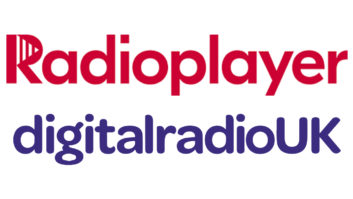The Future of Radio (after 2009)
Dec 1, 2009 12:00 PM, By Doug Irwin, CPBE DRB AMD
Radio is beginning to have significant competition; will it continue to stand the test of time?
Trends in Technology, Dec 2009
The Trends in Technology feature typically examines hard and fast methods to accomplish particular technical feats. This time around, the feature focuses on the trend aspect and speculates about the future of radio � how it will change in the not too distant future. For this reason, I’ll make some assertions and postulate some. For starters, though, let’s review some of the updates in technology that are either in the pipeline or close to becoming reality.
Power increase
A power increase for HD Radio transmissions has been in the works for some time now, and as of this writing, National Public Radio and Ibiquity have agreed to agree on a blanket 6dB power increase for HD Radio transmissions. They jointly presented their recommendations to the FCC, in the hope that the Commission will allow power increases in the immediate future. NPR and Ibiquity also propose that further power increases beyond 6dB should be considered on a station-by-station basis. For the technical implications of an increase in HD Radio power, see my article �Are You Ready for an HD Radio Power Increase?� in the July 2009 edition of Radio magazine and �Elevated Sidebands� in the August 2008 Insight to IBOC.

I am a proponent of HD Radio, having been involved with it on a first-hand basis for more than five years. It’s an impressive technology and works well. It hasn’t caught on as well with the public as many of us had hoped it would by now; but it took 20 years for FM radio to catch on, after all. I believe we are still in the early innings when it comes to the public’s acceptance of this new technology.
LPFM
Where are we with LPFM? This service has been in existence for nearly 10 years, yet it seems to have gotten little if any traction. That may be changing soon, though. The Local Community Radio Act of 2009 was passed by the House’s Energy and Commerce committee on Oct. 15, and has been forwarded to the full House of Representatives. The Senate’s version of the bill (S.592) appears to still be in committee as of this writing.
The aim of both of these bills is the elimination of the protection requirements that potential LPFMs have with respect to the third-adjacent channel of full-power FM radio stations. If these bills do pass in congress, the Commission may pursue further elimination of second-adjacent interference protection requirements as well. The elimination of these protection requirements will allow for many more LPFM stations to be licensed.
Looking to the future, it seems clear that if there are any �quiet� channels on the FM dial in your city that they may soon be filled with LPFM stations.
AM radio
Will there be a saving grace for AM radio? While it is clear that many AM radio stations remain successful, they are in large part high-power stations in major markets. I reached out to Steve Manuel, owner of station WWJB in Brooksville, FL, and asked him about the future of stand-alone, small market AMs such as his. �Success demands that we work harder and smarter every day. There is never a time to sit back,� he wrote. �A small market stand-alone AM must super serve its community or it simply can’t work. You must provide equal or better service than anyone else, period. You better provide at least half a day of live and local programming. It’s not going to work if you hook up to the satellite and forget it. Miracles are hard to come by these days, so if you want to succeed you better roll up your sleeves and get to work�.
Manuel (like many AM station owners) is of course very interested in the proposal by the Broadcast Maximization Committee that would reallocate now (mostly) unused spectrum formerly used by VHF TV transmissions on channels 5 and 6. AM radio stations such as WWJB would migrate to this new spectrum, turning on a digital (only) version of themselves. Parts of this spectrum would be allocated for LPFM, and part would become an extension of the current NCE FM band. As of the time of this writing, the Commission does not appear to have taken any action, beneficial or detrimental, on this proposal.
–continued on page 2
The Future of Radio (after 2009)
Dec 1, 2009 12:00 PM, By Doug Irwin, CPBE DRB AMD
Radio is beginning to have significant competition; will it continue to stand the test of time?
Trends in Technology, Dec 2009
I believe as we look toward the future that we will continue to see a thinning of the herd � meaning more AM and FM radio stations will go dark as they fail as businesses. So, on one hand, we have the possibility that the surviving stations will benefit from less competition; and on the other hand, we have a huge number of new radio stations to contend with � LPFMs and HD Radio stations � that will be available on the radio dial soon. It’s not hard to predict that radio will remain as competitive as it has been, if not more so.
Internet radio
What about the ultimate competitive juggernaut though? Will all the changes in over-the-air broadcast technology be mooted by the overwhelming presence of the Internet, and more specifically, Internet radio?

The answer is no. Internet radio will continue to grow in importance, but it will not completely supplant broadcast radio as we know it. Let me tell you why.
There are two points that the early adapters of Internet radio often make and point to when they prophesy the ultimate demise of radio. (There are others, of course.)
- Point 1: I can listen to whatever I want, whenever I want
- Point 2: I can listen to previously unknown radio stations and not be limited to what is in my own market
First, point 1. We can categorize radio programming in to three types: background entertainment, real-time importance, and specialty programming. Radio is, for the most part, background entertainment; it’s something that people turn on and have on in the background while they do other things, such as getting ready for work in the morning, driving, cooking or working in an office. The time that a certain hit song plays is of no relevance; what it relevant is that the listener hears songs he likes. There’s no compelling reason, then, to be able to hear it when you want to hear it, because for the most part, it’s always available anyway.
Much of radio programming has immediate relevance, with fast spoilage. The perfect example is of course, weather and traffic reporting. Weather changes fast, but traffic changes even faster. Soon after traffic issues are reported, they’re forgotten about. Radio talk shows are much the same way, because the topics are generally very timely, and therefore become irrelevant days (if not hours) after they are broadcast. Sporting events carried on the radio are very much the same: There’s no point in listening to a game after the fact when you already know how it turns out in the end. So there again, there’s little compelling reason to be able to have this type of programming on an on-demand basis.
The specialty type of programming is more akin to television programs. �A Prairie Home Companion� (to name one) would be a good example of a show that has little real-time relevance, no spoilage, and is more of a foreground entertainment. The ability for listeners to have it available in an on-demand fashion via streaming media, or via a file download, is obviously important, and represents a valuable resource to listeners.
I will assert that most people, though they may claim to want to be able to listen to whatever they want whenever they want will not, in practice, do it that often. It is easier than ever before, to be sure; however, most people just want to be entertained in some fashion, without putting a lot of work in to it. The on-demand aspect of listening to music has been around as long as radio: from lacquer 78s, to 45 RPM singles, to 33-1/3 RPM albums, to CDs and now file downloads, music users have had that capability. That’s nothing new. The ability to use a thumb-drive � to plug it in to the dashboard of your vehicle � is a fairly new capability. It really is no different, though, than burning your own CDs � which people have been doing for years � or making your own cassette tapes, which people did 20 years ago.
Although the on-demand aspect is very important with respect to specialty programming in radio, it has little if any importance with respect to much radio programming.
Point 2 � the ability to listen to a much greater selection of radio stations. While I think this capability is interesting � and novel � I don’t see it having much effect on radio as we know it. My arguments are very much like those I posed with respect to point 1. Yes, you can listen to 10,000 radio stations. However, much of them are playing the same music � they’re hardly unique. And, their unique aspects may be completely irrelevant to a far-away listener: local traffic, weather and events come to mind. A distant station’s specialty programs provide the only compelling reason to listen to it over the Internet, or to otherwise download them for play later on.
— continued on page 3
The Future of Radio (after 2009)
Dec 1, 2009 12:00 PM, By Doug Irwin, CPBE DRB AMD
Radio is beginning to have significant competition; will it continue to stand the test of time?
Trends in Technology, Dec 2009
The real reason streaming media will never kill radio
The answer is connectivity.
Radio waves have a tendency to get into places that you wouldn’t necessarily expect them to; a lot of effort goes into blocking them.
Internet connectivity, though, for an end user at least, is very much dependent upon the network administrator. If that network admin decides to block your stream from users on his or her network, it’s very simple to do. You need to keep in mind that streaming media uses up a lot of network resources � that’s the primary reason for blocking. Or, they may just have a policy to not allow streaming. Keeping radio out of your office though � that’s a different matter.
Another technical possibility is that an ISP will decide to block streaming media on a source-by-source basis, unless of course, the user is willing to pay extra for it. An alternative to that would be simply to charge by the bit for Internet access. If that were to be the case, the number of applications that use up lots of bandwidth (such as streaming media) diminish.

Internet connectivity � cheap as it has been over the last 10 years � will cause one of two things to happen. The explosion of Internet usage via mobile devices will bog the Internet down to the point that some users will use it less, or; it’ll become anything but cheap. I see that as the more likely scenario.
Do you really think major providers are going to continue investing in their internet delivery capability without seeking a large return on their investment?
Take a look at AT&T’s network capability. It’s easy because it’s been in the news a lot lately. A recent New York Times article reveals that AT&T has had trouble with its network’s ability to handle all the traffic from 9 million Iphones. AT&T will spend $18 trillion this year alone to upgrade its 3G network so it can better accommodate smart phones (not all of which are Iphones).
And of course it isn’t just AT&T having to heavily invest in its network infrastructure. Verizon recently paid nearly $10 billion for nationwide licenses in the 700MHz band, and is now starting to make use of them for its LTE (Long Term Evolution) technology (a variant of 3G). Verizon wants to have 30 markets built-out using this new technology next year, with the entire country’s network done by 2014.
It should be no surprise, then, that both AT&T and Verizon are opposed to the FCC’s proposed rulemaking with respect to Net neutrality in regards to wireless Internet access. The issue of Net neutrality has come to light because it is technically possible for an ISP to slow down data flow across their network selectively. What if a large provider decided it would make it faster for you (as the end user) to access one particular search engine as opposed to another? Likely then you might form a habit in using the one with faster access. This would be against the rules if the new FCC chairman, Julius Genachowski, gets his way.
The point: high-speed wireless Internet access, necessary to connect to real-time streaming media, is going to cost consumers more in the long run. If a service such as radio costs money, some people will opt not to use it or they’ll look to free versions of it � just like we provide now. If end-users have two means by which they can access the same content � one free and one not free � many will opt for the free version.
I’m not a futurist � and I don’t have a crystal ball to gaze into, or tea leaves to read. I would call myself a technical skeptic. I have seen a lot of technology come and go. Most of it worked great � it was novel in many cases � and in many cases it did something at least somewhat useful. The new technologies that catch on though � like the Ipod � are the exception, not the rule. I believe radio’s longevity speaks volumes about its future potential. The creation and development of the Internet is just as important � if not more so � than the development of the telephone system 100 years and more ago. Still, radio will live on because it’s a cheap and efficient means of doing what it does.
Irwin is transmission systems supervisor for Clear Channel NYC and chief engineer of WKTU, New York. Contact him at[email protected].












